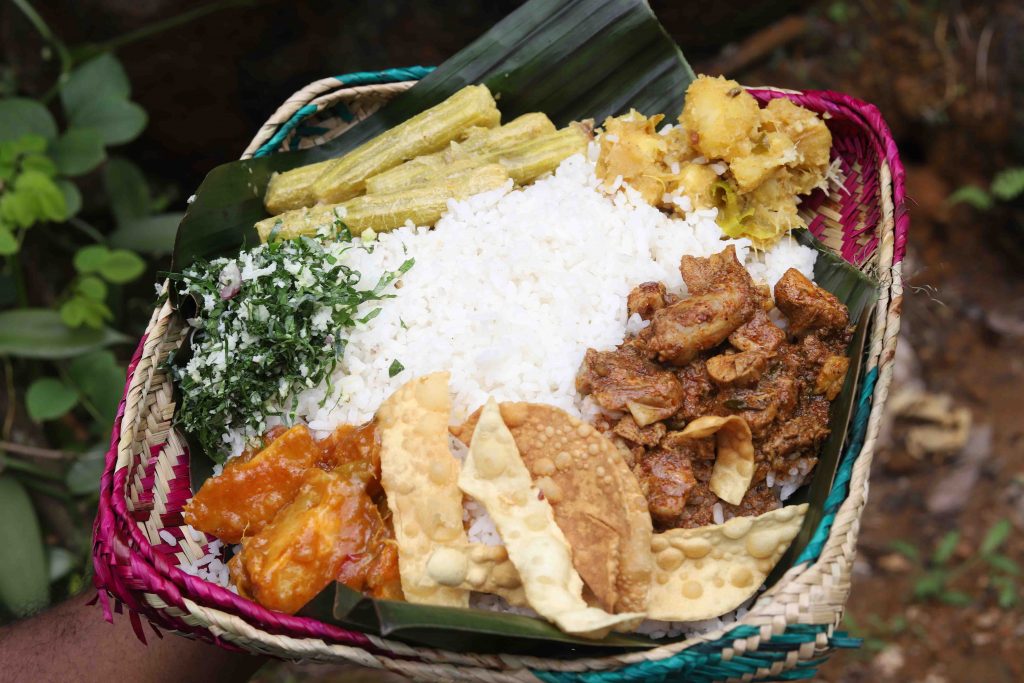
At first glance, travelers might assume Sri Lankan cuisine is simply a variation of Indian food. But the island’s culinary tradition stands proudly distinct, shaped by its tropical environment, cultural crossroads, and centuries of isolation that allowed unique practices to evolve.
The Island’s Maritime Soul
Unlike much of India, Sri Lanka’s cuisine has been profoundly shaped by its identity as an island nation. Fresh seafood appears in unexpected ways – in breakfast curry, wrapped in godamba roti, or slow-cooked in clay pots with goraka, a fruit that gives Sri Lankan fish curry its mysterious, complex sourness. This ingredient alone sets Sri Lankan cooking apart, creating a depth of flavor you won’t find anywhere else in South Asia.
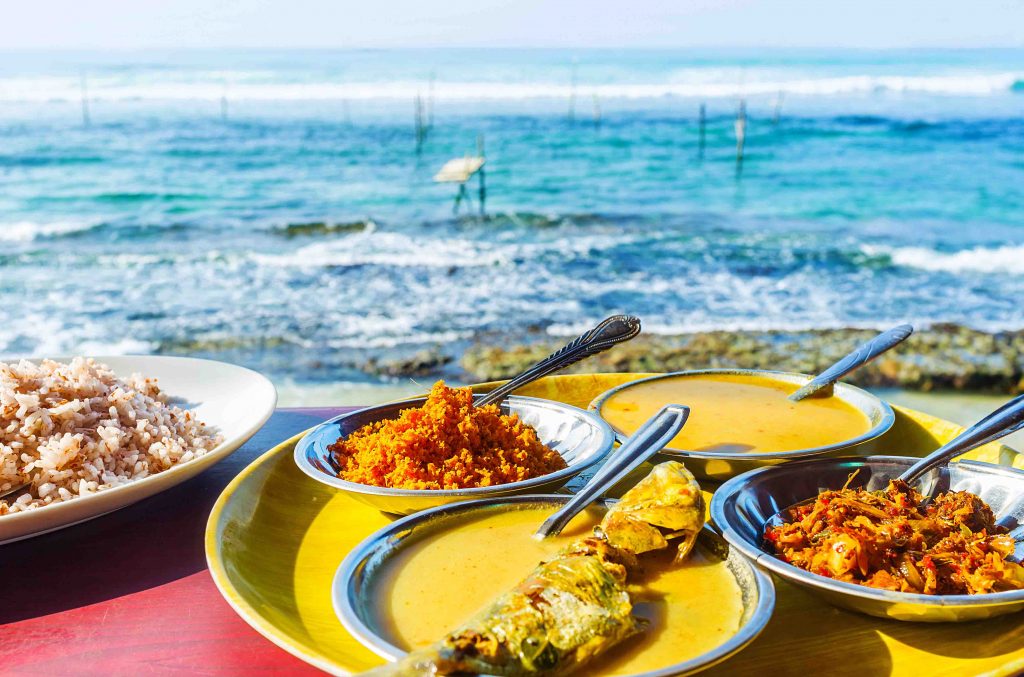
Along the coast, the day begins before dawn as fishing boats return with their catch. This isn’t just about fish curry – it’s about understanding how seafood weaves itself into every meal. Dried sprats add umami to breakfast sambols, while fresh crab finds its way into morning string hoppers. In coastal homes, fish head soup simmers gently as a morning cure-all, while chunks of tuna are slowly cooked in clay pots with rampe leaves and fresh coconut milk.
The island’s seafood culture reaches its peak in its fish curries. Unlike the coconut-heavy curries of Kerala or the tangy preparations of Bengal, Sri Lankan fish curry achieves its distinctive character through goraka. This dried fruit, when soaked and added to curries, creates a depth of sourness that’s neither citric like lime nor sharp like tamarind. It’s a complex, almost smoky sourness that simultaneously preserves the fish and elevates its flavor.
Rice and Curry: Sri Lanka’s Symphony of Flavors
While ‘rice and curry’ might sound familiar, the Sri Lankan approach is distinctly different. Where Indian thalis serve dishes separately, Sri Lankan curry plates are an exercise in mixture and harmony. Everything is served at once, meant to be mixed together on the plate – the rice, multiple curries, mallum (shredded greens), and sambols creating a complex melody of flavors in each bite.
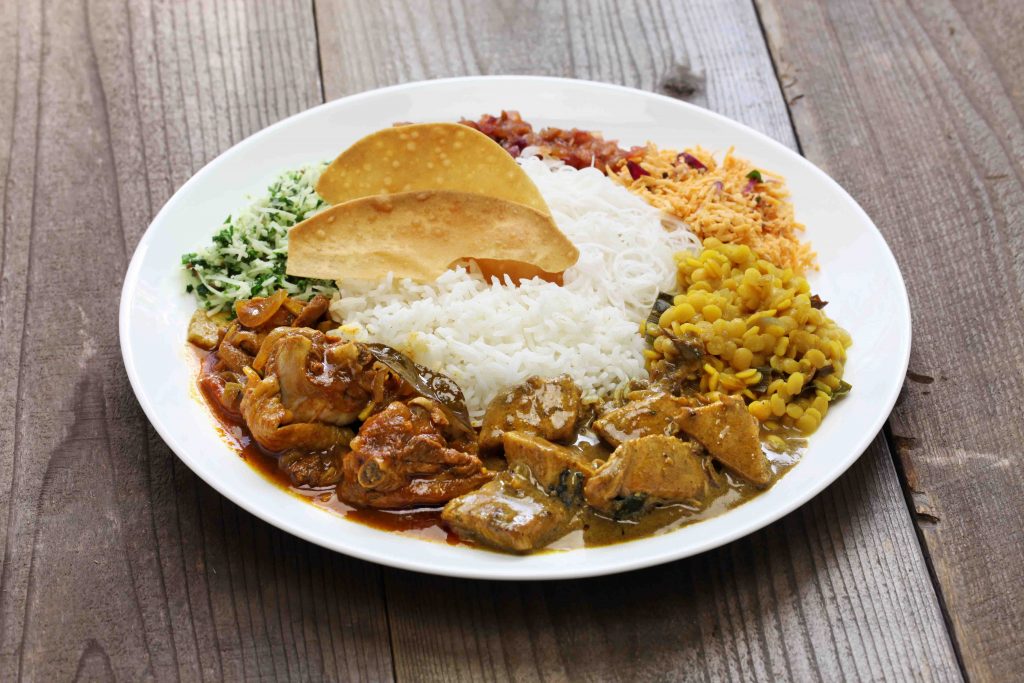
The magic lies in the composition. A proper Sri Lankan rice and curry serves as a lesson in balance: at least two vegetables curries (one green, one root), a protein curry (fish, egg, or meat), dhal curry (always present), mallum (quickly cooked shredded greens with coconut), and several sambols. Each element plays a crucial role – the creamy dhal softens the heat of spicier curries, while the fresh coconut sambol adds bursts of citrus and heat.
The ritual of mixing is itself an art form. Locals start by creating small sections on their plate, portioning rice with different combinations of curries and condiments. Each spoonful should deliver a different ratio of flavors – perhaps heavy on the pol sambol (coconut sambol) in one bite, leaning into the creamy dhal in another. The mallum adds texture and freshness, while a touch of lime pickle or dried chili sambol can transform the entire combination.
Spice Alchemy: How Sri Lanka Created Its Own Curry Language
Sri Lankan curries are notably different from their Indian cousins. The spices are roasted darker, creating deeper, more complex flavors. Fresh curry leaves and rampe (pandan leaves) are used in abundance, not just as seasoning but as essential ingredients that define the island’s flavor profile. Most distinctively, Sri Lankan cuisine makes liberal use of fresh coconut milk rather than yogurt or cream, creating curries with a tropical lightness despite their rich spicing.
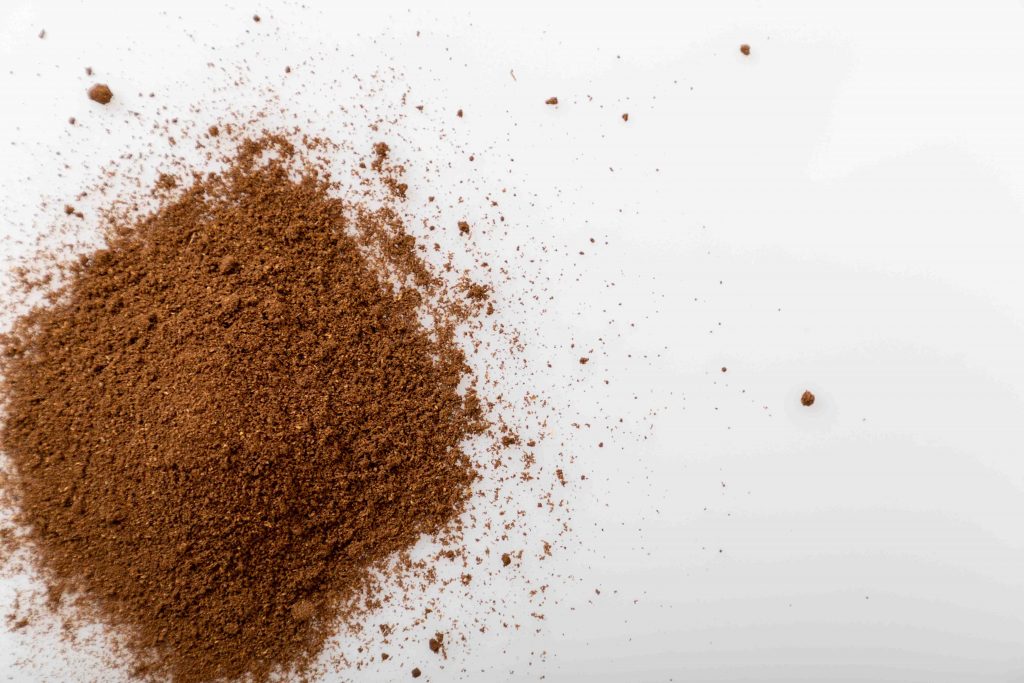
The art begins with the roasting of spices. In Sri Lankan kitchens, coriander seeds are roasted until they’re several shades darker than what you’d find in Indian cooking, releasing deep, almost coffee-like undertones. Cumin takes on a smokier character, while black pepper is often dry-roasted until it’s nearly charred. This deep roasting creates the characteristic dark color of many Sri Lankan curries – a rich brown rather than the bright reds and yellows of their northern counterparts.

Perhaps the most crucial distinction lies in the use of coconut milk. Where North Indian curries might use yogurt or cream, and South Indian ones often use coconut, Sri Lankan cooking takes the art of coconut milk to another level. The first pressing of coconut milk (thembili kiri) is added at the end of cooking to create richness without heaviness. The second pressing goes in earlier, forming the curry’s base. This technique creates layers of coconut flavor while maintaining a surprising tropical lightness that lets the spices shine through.
The Morning Feast: Sri Lanka’s Breakfast Revolution
Perhaps nowhere is Sri Lankan cuisine more distinctive than at breakfast. String hoppers (delicate rice noodle nests) or hoppers (fermented rice pancakes) are served with dhal curry, coconut sambal, and often spicy curry for breakfast.
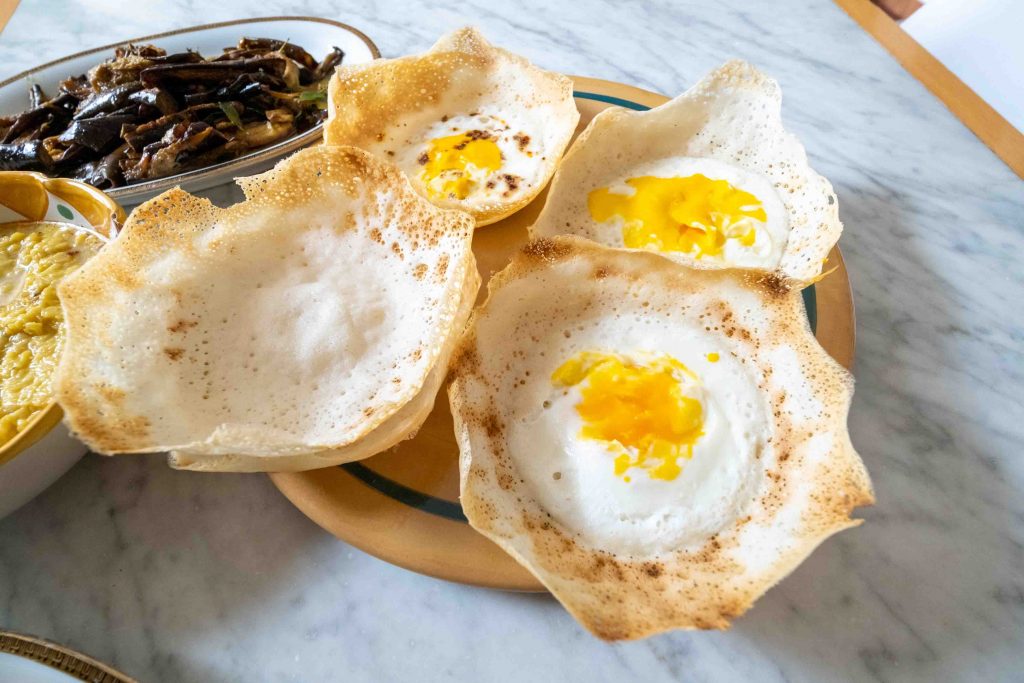
Walk into any Sri Lankan home at dawn, and you’ll find the kitchen already alive with activity. The rhythmic pat-pat-pat of string hoppers being pressed into their delicate nests, the sizzle of hoppers being swirled in their small woks, creating their distinctive lacy edges and creamy centers. These aren’t simple breakfast staples – they’re the result of preparations that often begin the night before, when rice is soaked and ground, batter is fermented, and curries are slow-cooked to perfection.
A proper Sri Lankan breakfast spread is a study in contrasts. The cloud-like softness of string hoppers provides the perfect canvas for rich curry sauces. A well-made hopper offers three textures in one – crispy edges that shatter like glass, a tender middle ring, and a creamy center that might cradle a just-set egg. The accompanying dishes showcase the full range of Sri Lankan flavors: creamy dhal curry, spicy pol sambol (coconut sambol) humming with chili and lime, perhaps a small dish of seeni sambol (caramelized onion relish) that hits sweet, spicy, and umami notes all at once.
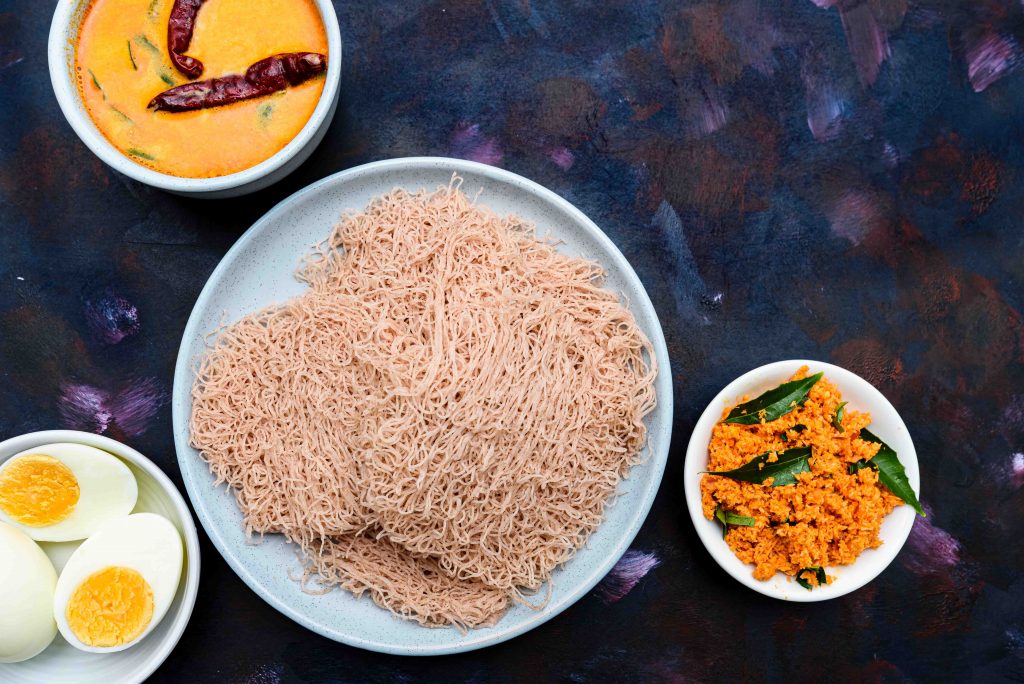
What makes this breakfast truly remarkable is how it defies Western notions of breakfast foods. Here, last night’s chicken curry might make an appearance, its flavors deepened overnight. A fish curry could be ladled over string hoppers, while a katta sambol (a fiery mix of chilis and Maldive fish) adds explosive bursts of heat. Fresh coconut milk might be poured over everything, its richness cut by a squeeze of lime.
Even the humble dhal curry takes on special significance at breakfast. Unlike the thicker Indian versions, Sri Lankan breakfast dhal is often cooked to a soup-like consistency, made rich with coconut milk and fragrant with curry leaves and rampe. It’s the perfect sauce to bring everything together, turning a plate of string hoppers into a memorable morning feast.
For the Curious Traveler
To truly appreciate Sri Lankan cuisine:
- Start your day with a traditional breakfast at least once
- Learn the art of mixing your rice and curry plate
- Don’t shy away from the sambols – they’re essential to the experience
- Try the same curry at different restaurants – each family has their own recipes
- Experience how the same dishes change from region to region
- Save room for short eats (snacks) between meals
The magic of Sri Lankan cuisine lies not just in its unique flavors but in its ability to surprise. Just when you think you understand a dish, you’ll try it in another region or home and discover new dimensions. It’s a cuisine that rewards the curious and adventurous, offering new discoveries even after weeks of exploration.
For travelers, understanding these distinctions matters. It helps you seek out authentic experiences, appreciate the complexity behind seemingly simple dishes, and most importantly, opens doors to deeper cultural connections. Because in Sri Lanka, food isn’t just sustenance – it’s a living history of an island that has always followed its own culinary path. cart, follow them – you won’t regret it.
Please drop us a note at: info@pearl-of-the-indian-ocean.com


